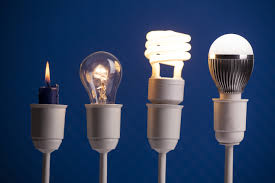 Question: I have been hearing that the common light bulbs (incandescent bulbs) are being replaced with these new LED lights. What are they and are they expensive?
Question: I have been hearing that the common light bulbs (incandescent bulbs) are being replaced with these new LED lights. What are they and are they expensive?
Answer: LED stands for Light-Emitting-Diode (Diode is an electronic device, through which current can pass freely in only one direction.)
LED bulbs differ from traditional incandescent bulbs in the way they produce light. Old-fashioned incandescent light bulbs pass electricity through a thin wire filament, LED’s produce light through a semi-conductor that emits light energy when an electrical current is passed through it.
LED lighting is highly efficient, long lasting, environmentally friendly and inherently controllable — enabling amazingly creative lighting. LED lighting is now being used for a wide range of interior and exterior applications.
Basic advantages of LED Light
Energy efficient – LED’s are now capable of outputting 135 lumens/watts. The more lumens in a light bulb, the brighter the light.)
40-watt incandescent bulb = 450 lumens
60-watt incandescent bulb = 800 lumens
100-watt incandescent bulb = 1600 lumens
Long Lifetime – 50,000 hours or more if properly engineered
Rugged – LED’s are also called “Solid State Lighting (SSL) as they are made of solid material with no filament or tube or bulb to break
No warm-up period – LED’s light instantly – in nanoseconds (a millionth of a second)
Not affected by cold temperatures – LED’s “like” low temperatures and will startup even in subzero weather
Directional – With LED’s you can direct the light where you want it, thus no light is wasted
Excellent Color Rendering – LED’s do not wash out colors like other light sources such as fluorescents, making them perfect for displays and retail applications
Environmentally friendly – LED’s contain no mercury or other hazardous substances
Controllable – LED’s can be controlled for brightness and color
LED’s are ideal for use in applications that are subject to frequent on-off cycling, unlike fluorescent lamps that burn out more quickly when cycled frequently,
LED’s mostly fail by dimming over time, rather than the abrupt burn-out of incandescent bulbs
LED’s do not contain mercury, unlike compact fluorescent lamps
Some Disadvantages using LED’s
LED’s are currently more expensive, price per lumen, on an initial cost, than the more conventional lighting methods. Bottom line: unless you’re replacing many incandescent bulbs in a large house, you won’t see significant savings in your electricity bill
LED’s can shift color due to age and temperature. Also two different white LED will have two different color characteristics, which affect how the light is perceived.
When considering the total cost of ownership (including energy and maintenance costs) LED’s far surpass incandescent or halogen sources and begin to threaten compact fluorescent lamps.)
Dave Silva/GC
I’m available to answer your questions and/or to supply you with a complementary estimate for any of your projects.



